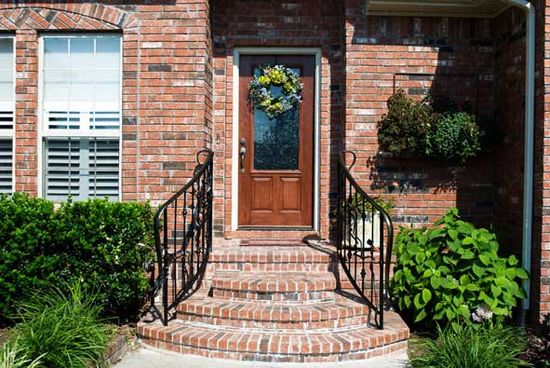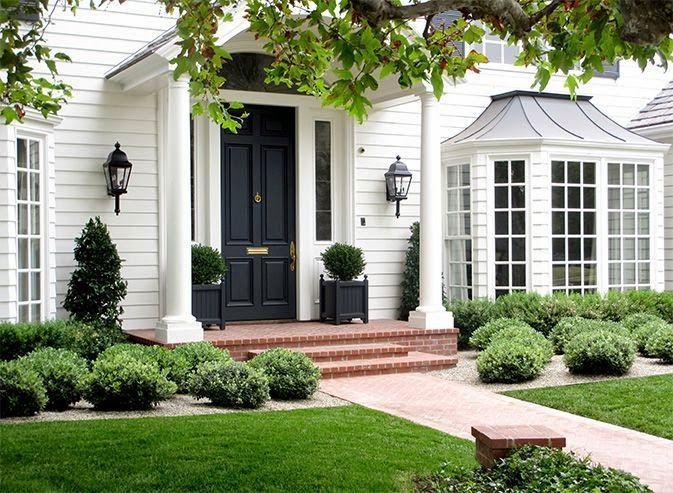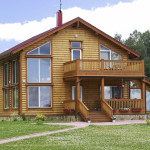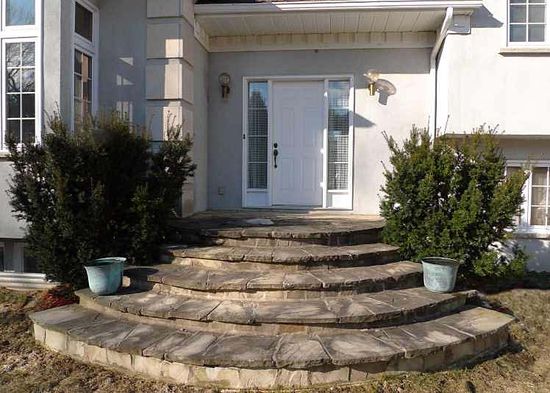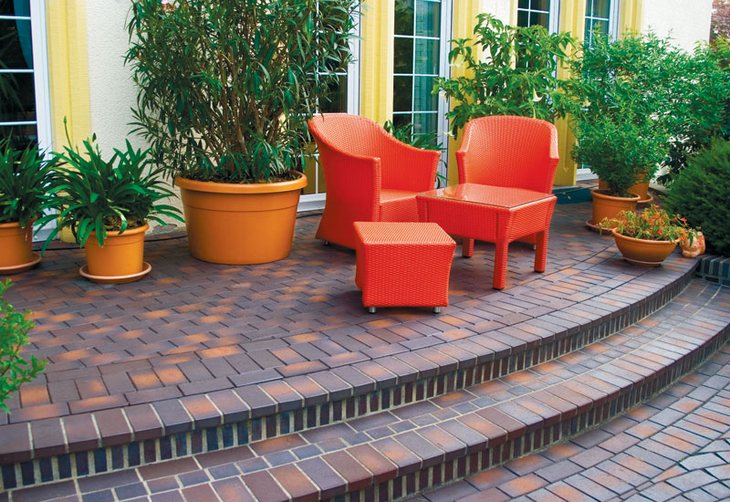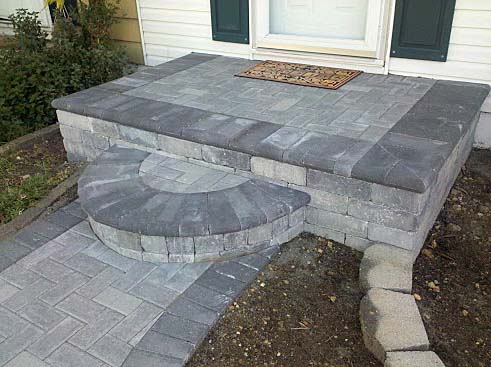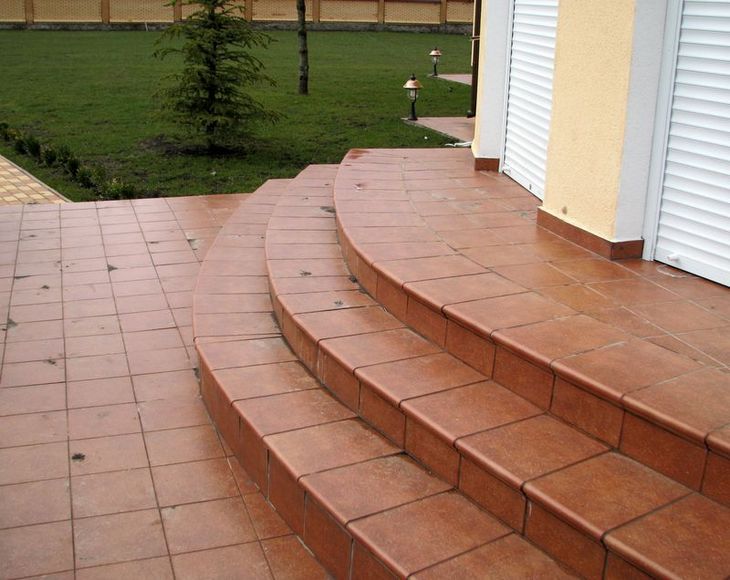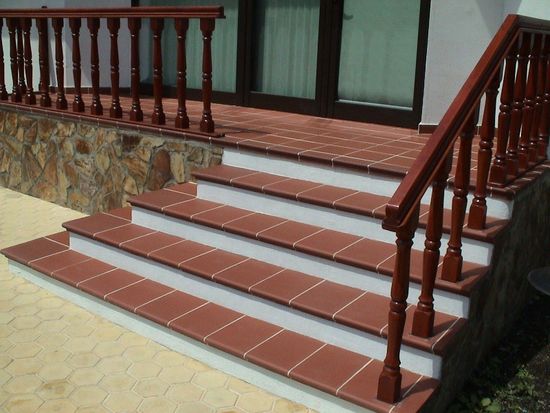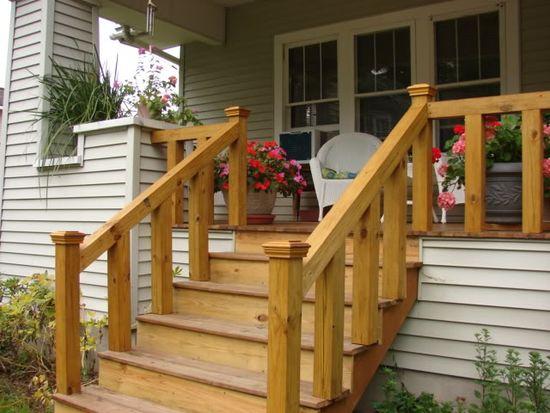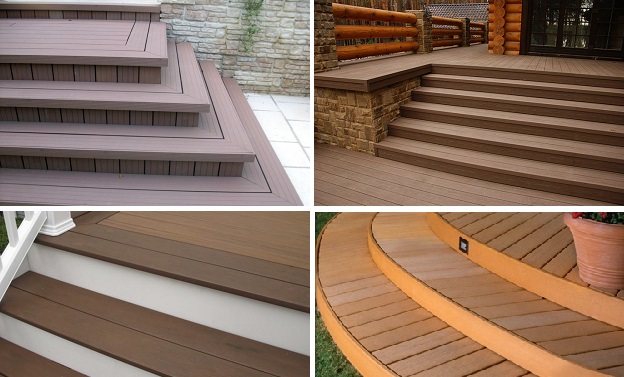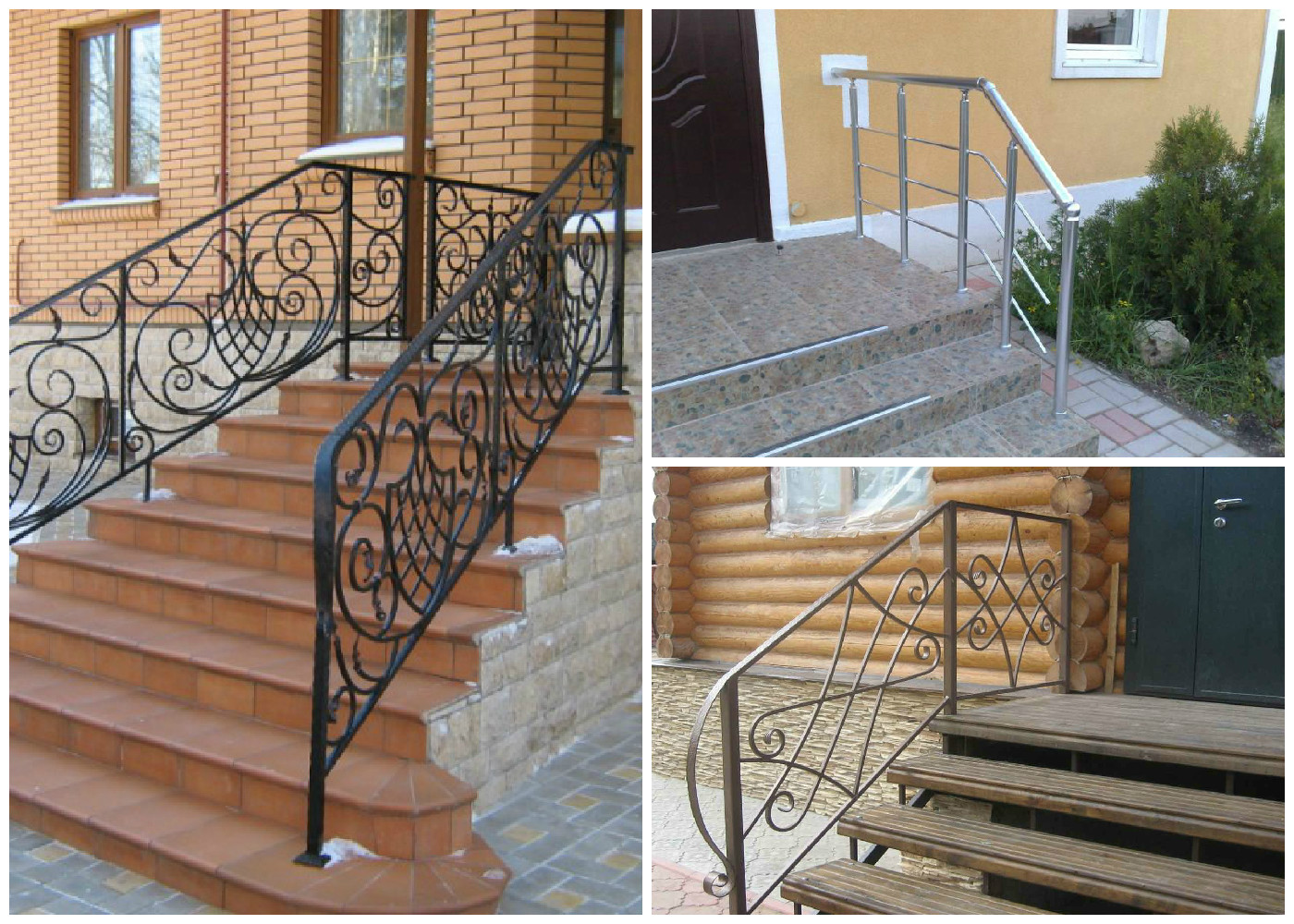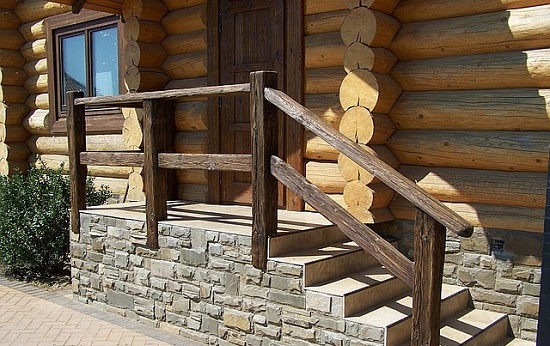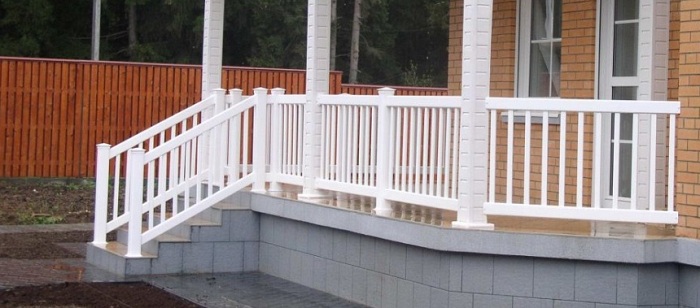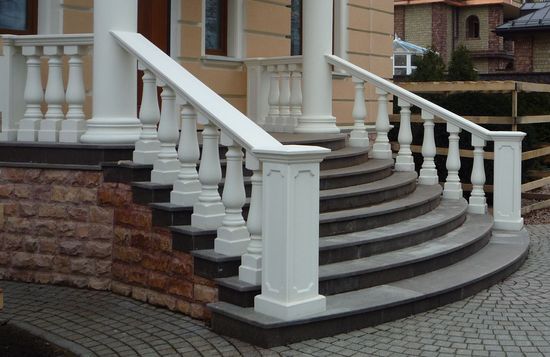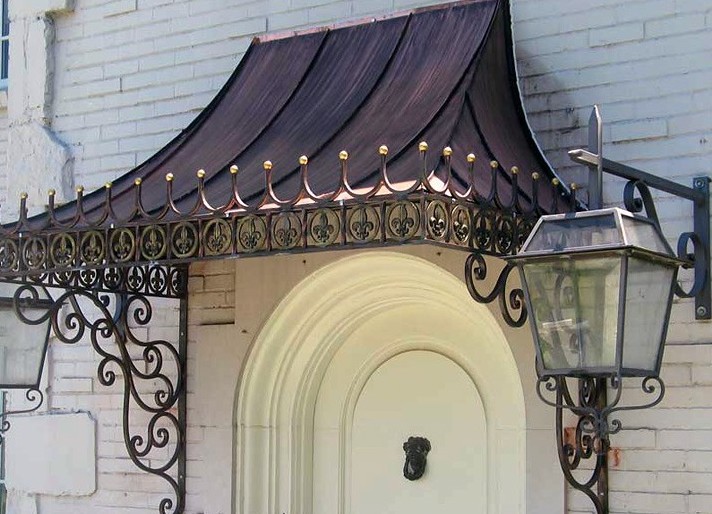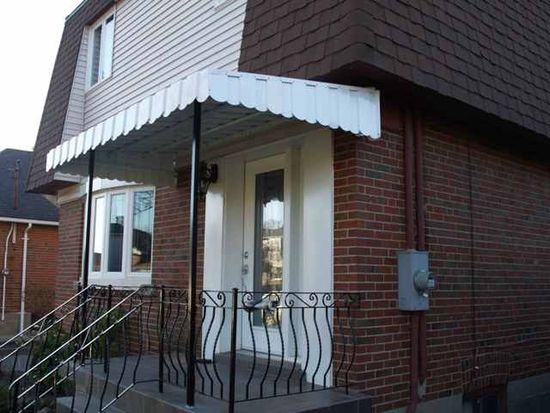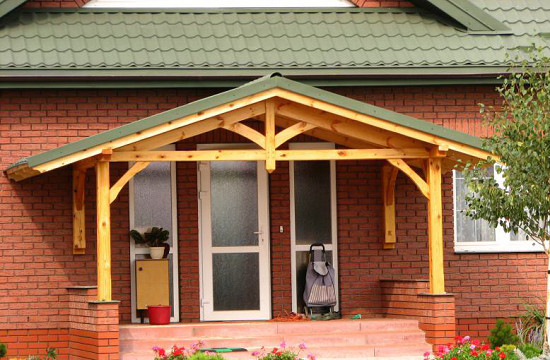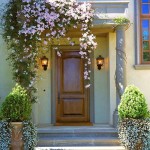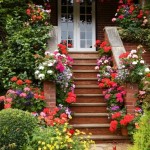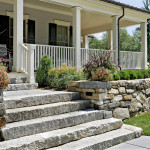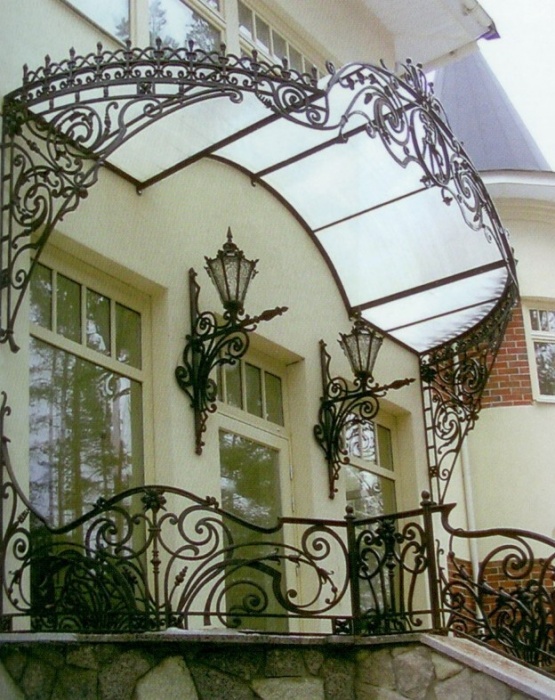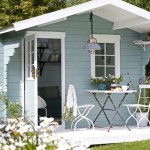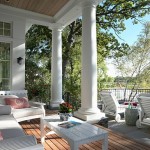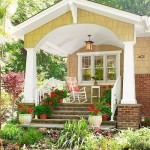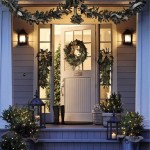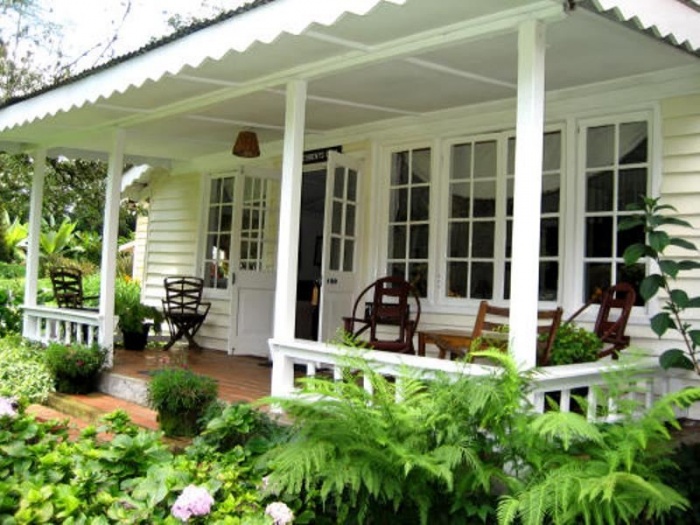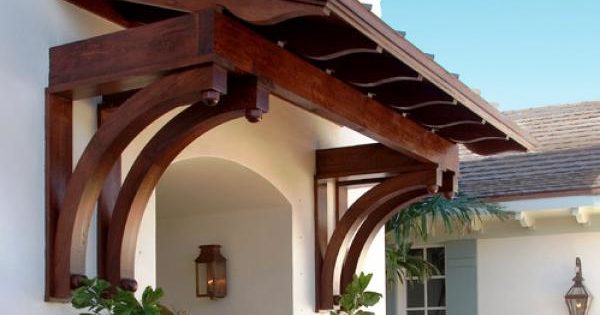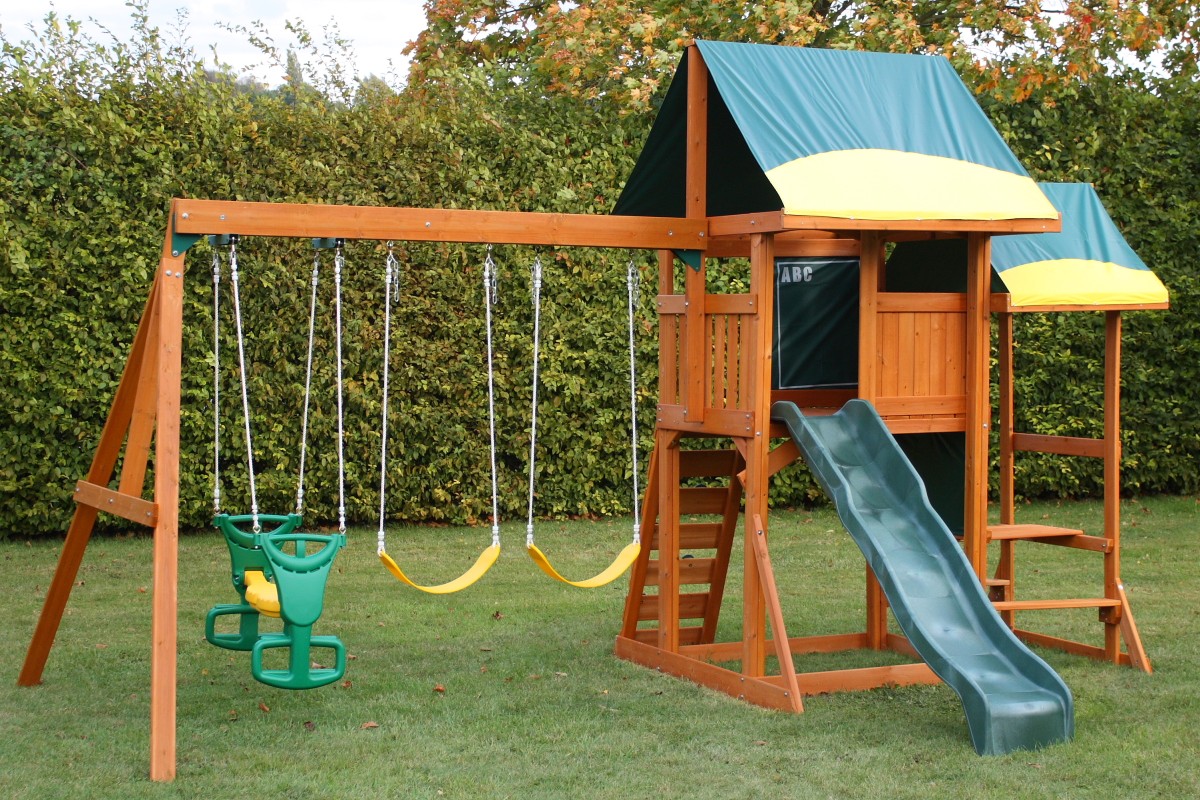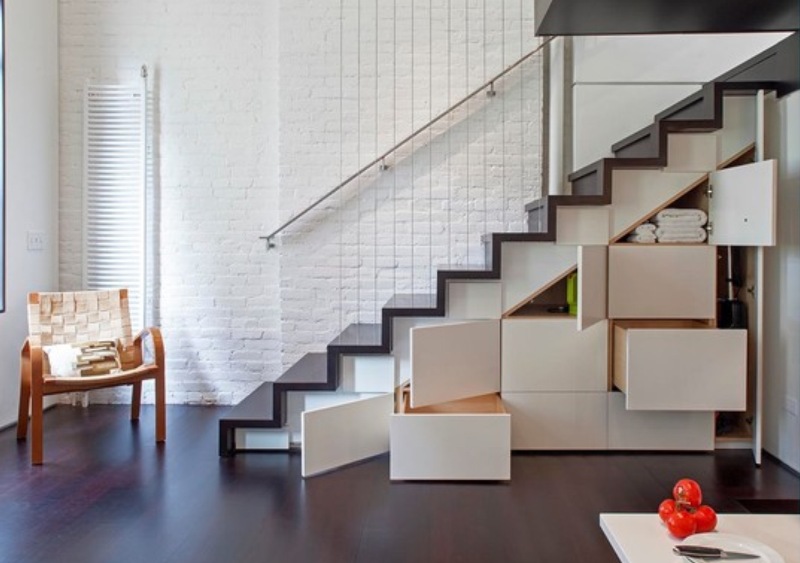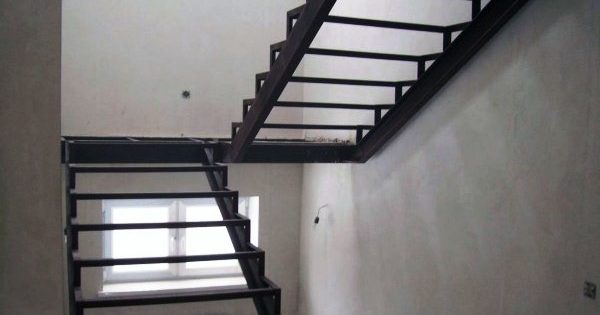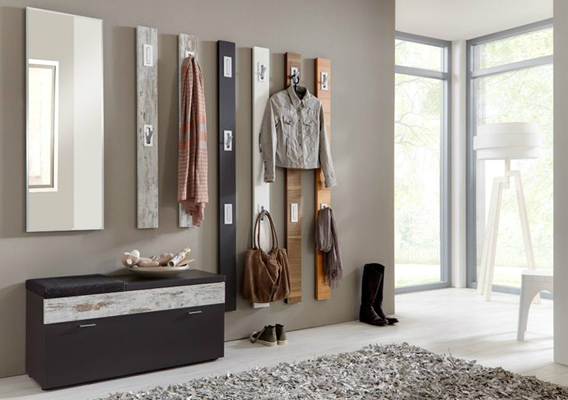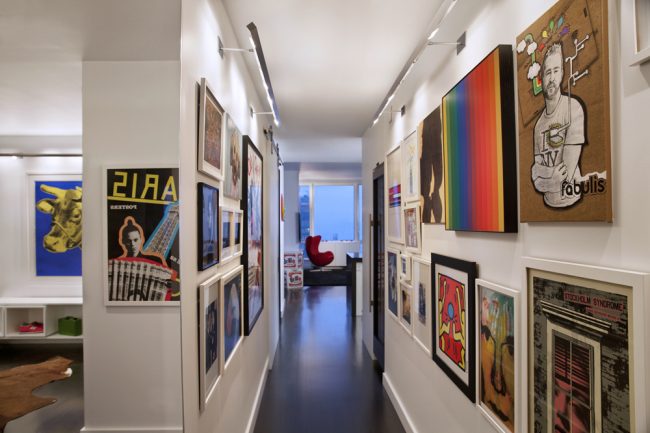7 tips for the design and decoration of the porch of a private house + photo
The porch is the face of the house. This simple truth does not need further clarification. It is clear that the porch should be aesthetic, combined in style with the house and the adjoining area, and also be strong, reliable, safe and, if possible, functional. Despite the fact that these requirements are well understood by everyone, it is sometimes very difficult to equip a porch according to all the rules. Getting to the independent design and decoration of the porch of a private house, it is worth familiarizing yourself with the basic principles of its organization.
No. 1. Basic porch requirements
The porch is a kind of extension to the house and serves to ensure that a person can comfortably switch from the ground level to the floor level in the house, because the latter is always higher, sometimes 20-30 cm, and sometimes 1-1.5 m (it all depends from the features of the construction foundation) Porch It seems quite simple and unpretentious construction, but if you look, then it includes several functional elements:
- stairs;
- railings and fences, which serve for easier and safer movement, and also play an important decorative role;
- the platform serves not only to approach front door, but also becomes an additional functional space outside the home. It is desirable that the site can accommodate at least 2-3 people;
- canopy for protection against precipitation;
- the sanitary zone is most often organized only with a rug for wiping shoes.

All these details must be combined with each other, and also in harmony with the facade of the house, plot, have something in common with fencing, gates and other elements of the local area.
Of course, the design of the porch is of no small importance, especially in matters of perception of the house, but since it will be assigned a daily load, it must be, first of all, very comfortable, practical and thoughtful. Each structural element of the porch must meet the requirements of the owners of the house, so it is so important to create a project in advance and determine the required number of steps, dimensions of the platform and canopy, and the height of the railing. Consider worth the following nuances:
- Door it is advisable to do it at a height of 3-4 cm from the level of the site, so that in case of icing it could be freely opened;
- to the size of the site no strict requirements are put forward, however, it is better to accommodate 2-3 people, but there are also house designs, in which the playground plays a role verandas or terraces, or even girdles the house. In all these cases, the porch receives an additional function - the ability to place a rest area on it. Some experts advise not to make the surface of the site completely horizontal, but rather create slight slope of 2-3 degrees. This will allow rainwater to flow freely and not accumulate on the site, but the usefulness of this solution is doubtful: if you equip the canopy in accordance with all the rules, then rainwater will not fall onto the porch. Consequently, the slope can be done only if the canopy does not cover the entire site;

- railing it is necessary to equip it only if the height of the porch exceeds 1.5 m, and the fence is necessary to ensure safety.In other cases, it plays a purely decorative role. The optimal height of the railing is 1.8-1 m;
- canopy must necessarily protrude beyond the porch, at least 2-3 cm, providing normal protection of the site from rainfall;
- number of steps it should preferably be odd that the person stepped onto the site from the same foot with which he began to climb. The optimal height of the step is 15-20 cm, the depth is 30-35 cm, with an increase in both parameters, it becomes inconvenient to take a step. Wooden steps may have a slight slope for free draining of water.
An important element of the porch is lighting. In addition, if the area allows and there is a need, you can equip the porch relaxation area with the benches, chairs, sofas, a table and organize breakfast or lunch in the fresh air.
No. 2. What to consider when designing a porch?
Having compared hundreds and even thousands of private houses, we are unlikely to find two similar porches, if this, of course, is not a typical type of building. Each has its own preferences, tastes and requirements, which form the basis for the design of the porch. But in the desire to stand out and create an original solution, do not forget some principles that will help to organically fit the porch into the surrounding area.
When choosing a design style must be considered the desired dimensions of the site, the height of the future staircase and its configuration, the material for finishing the facade of the house, as well as features landscape design.
The easiest way - use in the arrangement of the porch the same materials and colors as for the house itself. This is the most common solution that allows you to create a harmonious input group. For example, if a house is built of wood, it would be logical to use wood when arranging the porch, for paving a brick - paving slabs for brick. Conversely, a brick porch will look very inappropriate near a wooden house. At arrangement it is possible also focus on the elements of the site: if the fence and the gate are decorated with forged elements, then they can be used for the porch railing.
A more complicated way is decoration of the porch in a different style from the house. This is allowed, but it will require exceptional taste. To combine the house and the entrance group, it will be necessary to think over common details: these can be elements of the same color or some geometric shapes.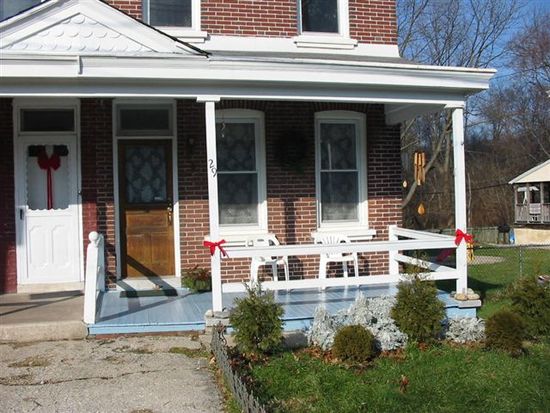
There is one more solution. - arrange the porch in the style closest to the site. In other words, the entrance group should be more a continuation of garden paths and flower beds, rather than part of the house. In this way, you can create very interesting solutions and blur the boundaries between the entrance to the house and the plot itself.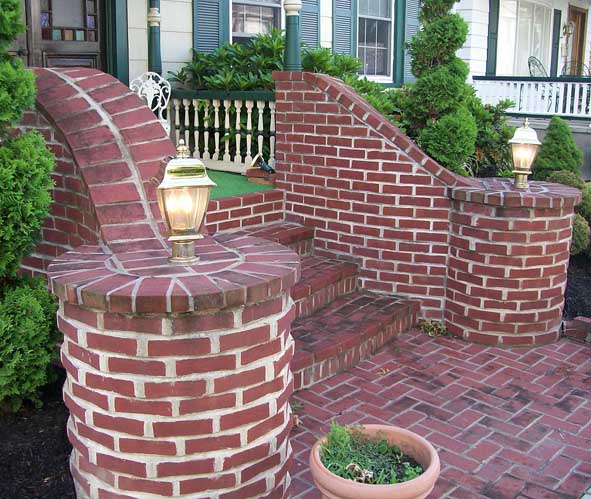
No. 3. Staircase decoration
Entrance to the house begins with climbing stairs, they take on a significant load, so their arrangement must be approached very seriously. Choosing porch steps, should be considered tasks assigned to him, including protecting the base from destruction, giving the stairs a complete and aesthetic appearance.
Stairs and playground, usually, are made of one material. It must be wear-resistant, non-slip, withstand temperature extremes and high humidity, and also be resistant to rot and invulnerable for rodents. Finishing material should preferably not fade in the sun and be easy to care for, and, of course, be aesthetic. The ideal material in all respects has not yet been invented, but there are several quite suitable ones.
The most popular materials for arranging steps and a porch platform:
- a natural stone - an expensive and elegant way to decorate the porch. There are a lot of rocks, they differ in color and texture, but they are all resistant to any weather and mechanical influences.You can use both sawn stone and tile or strip of stone. Most often, for facing the porch use sandstone, marble and lamezite, a granite considered one of the most expensive and durable options (such a porch will serve you for at least 100 years). Slippery rocks are subjected to heat treatment or engraving, but if you do not want to “mock” the stone, you can purchase special rubber pads. Another interesting option is rubble stonethat will fit into rustic-style plots;

- paving slabs considered the most common porch lining option. The secret of popularity lies in a wide variety and excellent performance. The material is made of a sand-cement mixture with special additives and dyes. May be any shape, color and size, imitate different types of stone. Interesting patterns can be formed from tiles. The material is resistant to high humidity, temperature extremes, direct sunlight, sufficient frost resistance, strength and durability. To installation paving slabs must be approached responsibly, otherwise it may sag. Significant minus - in the cold, the material becomes slippery, therefore, it is not enough to choose a tile with a well-textured rough surface - you will have to provide rubber pads or additionally lay the coating for a period of low temperatures;

- concrete tile - more budget analogue of sidewalk. There are both ready-made items and special items on sale. molds for self-casting. Of the pluses, we note the strength, high resistance to moisture, sunlight and abrasion, as well as the ability to imitate a stone coating, but in severe frost, concrete tiles can crumble or crack.

- ceramic tile. For the porch lining, only that tile that can be used in outdoor conditions is suitable, which is easy to check by marking. The foot should be drawn on the package, and under it should be a shaded surface, and a snowflake icon should also be present. Pay attention to the flame icon and the number in it, which means the number of firing: tiles with one firing are better suited for street conditions, it is less porous. The main advantage of the material - A huge variety of shapes, shades, sizes and textures. Ceramic tile can be glossy, matte, embossed, mosaic, wood or stone - you can turn any idea into reality. Material relatively inexpensive, moisture resistant but very fragile and more or less strong mechanical loads can not withstand, and in winter, such tiles also become slippery;

- brick tile - One of the best options for steps and a porch platform. Material is made from special types of clay at a very high temperature. Brick tile durable and very strong - in winter you can’t be afraid to remove snow from it with a tool - you can not damage it with a blow. Moreover, the material moisture resistant, therefore, even in severe frosts it does not crack, resistant to sunlight, has rough non-slip surface;

- porcelain tile in strength, it is approximately on par with clinker tiles, it looks very solid, often imitates natural stonebut is not cheap. Material is made using special technology from clay, feldspar, quartz and additives, resulting in material with high moisture resistance, wear resistance and ability to withstand any mechanical stress. Porcelain Tiles Does not take any fungus, or mold, or sun rays, or time. In winter, however, you have to solve the problem with a slippery surface;

- metal although it pleases with durability and allows you to equip a nice openwork porch, it is used infrequently and mainly for those houses where they come only occasionally, and do not live permanently;

- natural wood - it's beautiful and environmentally friendly, only very troublesome. It is better to choose the most moisture-resistant rocks (larch and oak) or wood that has come to heat treatment, but you still have to constantly treat the surface with protective materials, preventing the occurrence of mold and fungus, but the steps in the cold will not become slippery. Even with proper care, the tree is unlikely to last a very long time, and the material is afraid of fire;

- terrace board has almost the same advantages as natural wood, but it is more practical to use, resistant to moisture and sunlight, does not slip, does not rot, easy to install and boasts a huge variety. Make terrace board on different technologies, but always her the surface has a noticeable relief. A special type of material is a board made of wood-polymer composite, which includes wood shavings or sawdust and a binder. Such a board, although less environmentally friendly, is more resistant to negative environmental impacts than other types of terrace boards.

When choosing a material, take into account the features of the facade of the house: for wooden houses, mostly natural wood or a terrace board, for brick or stone houses it is appropriate to use different types of tiles, stone and porcelain tiles, for a plastered facade, tiles are also suitable. The staircase does not have to be strictly opposite the front door - it can be on the side, be semicircular or even with two marches. To ensure maximum comfort and safety in the winter, you can equip it under the steps heating system via electric underfloor heating.
Number 4. Decoration of railings and fences
The functions assigned to the railing are clear to each of us - it is ensuring the safety of movement and additional decor of the porch. When choosing material for them, it is necessary to take into account the features of home and foot decoration, as well as the estimated load.
You can use one of the following materials:
- metal - It is a leader in strength and durability. Fences can be made of metal rods and pipes, as well as forged - there are options for every taste and budget. The metal must be treated with an anticorrosive composition and tinted during operation to prevent rust. It is important that such a fence does not contain any sharp elements that could injure or tear clothing. Metal can also serve as a handrail; alternatively, wooden or plastic linings. The metal fence is in good harmony with the facade of bricks and stairs made of tiles or stone;

- tree - a warm, durable, natural and aesthetic material from which a fence of almost any shape can be made. Great for houses in the design of which there is a tree, but also with brick, stone, tile and stucco will look great. Installing a wooden railing is not difficult, and the design itself will be much safer than metal. Among the minuses are low durability, instability to moisture and direct sunlight, insects, rodents and fungi, as well as the need for constant care, but the beauty of a natural tree is worth it;

- polyvinyl chloride - the most affordable option. Among the main advantages are durability, a wide variety of shapes and colors, good wear resistance and ease of installation. Very nice fences are made from PVC, and in such a variety that they can be combined with any facade;

- concrete. Such fences look thorough and even aristocratic, because often from concrete figured balusters that support the handrail are cast. The main advantages: strength, durability, wear resistance, a wide variety of shapes, resistance to negative environmental factors.Minus - a lot of weight and increased load on the site and steps. Such a fence will be appropriate in the design of a large country house with a spacious adjacent plot;

- a rock - It is a synonym for strength and durability. Like stone steps, such a fence will last a very long time, but it will also require a lot of investment. An alternative to natural stone - artificial, it is easier and cheaper, and its reliability is almost not inferior to it. Naturally, it is necessary to combine a stone fence with an appropriate staircase and facade. An interesting solution is a stone handrail on metal railing.

No. 5. Canopy Decoration
Ideally, the canopy should completely cover the porch area and go beyond it, but with limited funds, you can make a visor only above the front door. If the canopy is small and light, then as fixtures You can use beams or pipes coming from the wall of the house. For large and heavy visors, it will be necessary to equip the supports, which, by the way, can become part of the porch decor. Moreover, in two- and three-story private houses, the canopy can be combined with balcony.
Popular materials for arranging the canopy:
- tree - beautiful and easy to process material. This canopy is easy to install, combined with a number of facade materials;

- metal - strong and durable material that can be decorated with forged elements, but during rain such a peak will be too noisy;

- corrugated board - inexpensive material, which is lightweight, easy to install and high fire safety;

- polycarbonate - translucent, well bending material, with which you can equip a canopy of any shape. It goes well with forged metal parts;

- metal tile - Another option for equipping a strong and durable, and most importantly, a pretty canopy. Great in cases where the roof of the house is also made of metal tiles. During installation, it is important to choose the correct angle of inclination - 20-25 degrees: if the angle is less, then snow can accumulate, and if it is more, then the canopy will close the view and prevent the door from opening;

- the cloth used only in the warm season, protects the site from sunlight. Often used in cases where the porch is combined with a terrace and serves as a relaxation area.

Some materials can be successfully combine with each other. The shape of the canopy can be anything: visors often do arched, domed, flat, single and gable, less often choose a concave shape. Trying to create a unique solution, we must not forget that water should freely flow from the visor, not lingering on its surface.
No. 6. How to decorate the porch?
It is advisable to think over the location of the main elements of the decor at the design stage of the porch.
Popular decoration methods:
- plants - a universal decor that will be combined with wood, and with stone, and with metal. On the porch you can put flowers in flowerpots, plant climbing plants that will braid the railing, build flower beds built along the stairs or use hanging pots - there are a lot of options. It is better to choose flowers that bloom throughout the entire warm season. You can also use dried flowers, evergreen shrubs and even artificial flowers, but choose those that look practically indistinguishable from natural ones;
- lighting - at the same time a functional and decorative element of the porch. The choice of garden lights is huge, so it will be possible to decorate the entrance to the house with an unusual lantern, LED lighting, stone lamps or even garlands;

- garden furniture - an optional item on the porch, used only if there is enough space on the site. It can be just a bench, a chaise lounge or a table with chairs and sofas - it all depends on the parameters of the porch and your own preferences;
- curtains - A beautiful light decor element on the porch porch.With their help, a home recreation area can be turned into a kind of summer cafe area;
- seasonal decorations. The porch of a private house for different holidays and seasons can be decorated in different ways. For example, in winter, spruce branches, cones, mountain ash, garlands will serve as a decoration, on the eve of Halloween - pumpkins, and in the fall - ears, fruits and yellow leaves.
Number 7. Basic design styles of the porch of the house
Among the designers who are professionally engaged in the arrangement of entrance groups of houses, there are style classificationthat can be used to decorate the porch. Their basic features and principles will help everyone independently create a tastefully decorated porch.
Basic styles:
- medieval, or the style of the house-fortress. It is supposed to use natural stone both in the design of the site and stairs, and for basement house. Everything should be rough and massive, fixtures are welcome in the form of torches. As a decor, flowers are used that emphasize the massiveness of the finish with their lightness and brightness;
- classic style suggests a gable canopy, columns and decorative balusters, strict forms and maximum functionality of each element are welcome. As decoration, stone, tile or painted wood can be used;

- European style - these are strict and geometric correct straight lines without any curls and smooth rounded lines. A similar style in the arrangement of the porch has much in common with minimalism in landscape and interior design. Decor items should not be many, often garden figures and lanterns are used in their quality;

- french style is a variety of European, and its main distinguishing feature is the presence of a glazed and decorated with openwork lattice doors. The porch is complemented by a large number of plants and wicker furniture;

- porch in the style of a gingerbread house It is distinguished by the use of bricks, openwork metal grids, climbing plants. If wooden parts are used, they must be painted in natural colors;
- porch in russian style - option only for wooden houses. The main differences are the use of wood, chiseled balusters, ornate patterns and carved elements.

It’s not so difficult to independently design the porch of a private house. It is enough to determine the basic preferences and adjust them to the requirements of functionality and security.

